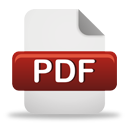

CLC number:
On-line Access: 2025-10-25
Received: 2024-05-06
Revision Accepted: 2024-06-27
Crosschecked: 2025-10-27
Cited: 0
Clicked: 2773
Citations: Bibtex RefMan EndNote GB/T7714
Binjie XU, Zhiyong SHI, Yun YANG, Jianxi WANG, Kaiyun WANG. Rail profile optimization through balancing of wear and fatigue[J]. Journal of Zhejiang University Science A,in press.Frontiers of Information Technology & Electronic Engineering,in press.https://doi.org/10.1631/jzus.A2400235 @article{title="Rail profile optimization through balancing of wear and fatigue", %0 Journal Article TY - JOUR
考虑磨耗与疲劳平衡关系的钢轨廓形优化机构:1西南交通大学,轨道交通运载系统全国重点实验室,中国成都,610031;2佛罗伦萨大学,工业工程系,意大利佛罗伦萨;3石家庄铁道大学,土木工程学院,中国石家庄,050043 目的:轮轨磨耗的同时,往往伴随着疲劳损伤,这两种因素的共同作用决定了钢轨服役寿命。本文主要目标在于深入研究重载列车在运行过程中轮轨磨耗与疲劳损伤的发展规律,探索并提出一种兼顾磨耗与疲劳平衡关系的钢轨轮廓优化策略,旨在有效延长重载铁路钢轨服役寿命。 创新点:1.综合考虑钢轨磨耗和疲劳的相互作用,提出平衡两者关系的钢轨廓形优化方法;2.利用非均匀有理B样条(NURBS)理论将钢轨廓形离散为控制点,实现廓形的灵活调整;3.采用粒子群-莱文贝格-马夸特(PSO-LM)算法对反向传播(BP)神经网络进行优化,提高模型的计算效率和准确性;4.通过混沌微变自适应遗传算法对模型进行求解,进一步提升优化结果的质量。 方法:1.利用现场跟踪测试数据,建立出符合实际的车辆动力学模型与轮轨磨耗、轮轨疲劳预测模型(图6);2.利用PSO-LM算法优化基于BP神经网络的多目标优化模型,并在混沌微变自适应遗传算法帮助下求解优化模型(图9);3.基于建立的整车动力学模型和磨耗模型,分析优化型面的动力学性能和磨耗疲劳损伤特性(图13~15)。 结论:1.钢轨磨耗与疲劳损伤共同存在且相互竞争,在掌握两者发展特征后,采用多目标优化方法获得能使磨耗与疲劳保持平衡的优化钢轨廓形;2.轮轨静力学计算结果表明,优化廓形具有更好的轮轨接触分布、更大面积的接触斑、更稳定的滚动圆半径差;3.动力学计算结果表明,优化廓形能有效降低轮轴横向力、脱轨系数、轮轨接触应力,且大幅度改善测点4的磨耗率和疲劳裂纹深度。 关键词组: Darkslateblue:Affiliate; Royal Blue:Author; Turquoise:Article
Reference[1]ChallenJM, OxleyPLB, HockenhullBS, 1986. Prediction of Archard’s wear coefficient for metallic sliding friction assuming a low cycle fatigue wear mechanism. Wear, 111(3):275-288.  [2]DingJJ, SunSL, LiF, et al., 2012. Simulation of coupling relationship between wheel rolling contact fatigue and wear. Journal of Mechanical Engineering, 48(16):86-90.  [3]EkbergA, MaraisJ, 2000. Effects of imperfections on fatigue initiation in railway wheels. Proceedings of the Institution of Mechanical Engineers, Part F: Journal of Rail and Rapid Transit, 214(1):45-54.  [4]EvansJR, LeeTKY, HonCC, 2008. Optimising the wheel/rail interface on a modern urban rail system. Vehicle System Dynamics, 46(sup1):119-127.  [5]GrassieS, NilssonP, BjurstromK, et al., 2002. Alleviation of rolling contact fatigue on Sweden’s heavy haul railway. Wear, 253(1-2):42-53.  [6]HienschM, BurgelmanN, 2019. Rolling contact fatigue: damage function development from two-disc test data. Wear, 430-431:376-382.  [7]HuYL, GeX, LingL, et al., 2025. Dynamic performance of a high-speed train exiting a tunnel under crosswinds. Journal of Zhejiang University-SCIENCE A, 26(1):21-35. http://doi.org/10.1631/jzus.A2300610  [8]JendelT, 2002. Prediction of wheel profile wear—comparisons with field measurements. Wear, 253(1-2):89-99.  [9]KalousekJ, SrobaP, HegelundC, 1989. Analysis of rail grinding tests and implications for corrective and preventative grinding. The Fourth International Heavy Haul Railway Conference, p.193-204.  [10]KalkerJJ, 1982. A fast algorithm for the simplified theory of rolling contact. Vehicle System Dynamics, 11(1):1-13.  [11]KangSJ, LeeIS, LeeKH, et al., 2002. Hecke algebras, Specht modules and Gröbner–Shirshov bases. Journal of Algebra, 252(2):258-292.  [12]LiYX, DaiLC, GuoZT, et al., 2024. Carbody abnormal lateral vibration failure of high–speed train induced by the coupling factor of the wheel re-profiling method and excessive rail wear. Engineering Failure Analysis, 160:108170.  [13]LinFT, HuWH, 2020. Study on the economical grinding surface of wear rail. Journal of Railway Science and Engineering, 17(10):2493-2502 (in Chinese).  [14]LinFT, ZhouS, DongXQ, et al., 2021. Design method of LM thin flange wheel profile based on NURBS. Vehicle System Dynamics, 59(1):17-32.  [15]MagelEE, KalousekJ, 2002. The application of contact mechanics to rail profile design and rail grinding. Wear, 253(1-2):308-316.  [16]NikbakhtS, AnitescuC, RabczukT, 2021. Optimizing the neural network hyperparameters utilizing genetic algorithm. Journal of Zhejiang University-SCIENCE A, 22(6):407-426.  [17]RanL, DingY, ChenQZ, et al., 2023. Influence of adjacent shield tunneling construction on existing tunnel settlement: field monitoring and intelligent prediction. Journal of Zhejiang University-SCIENCE A, 24(12):1106-1119.  [18]SunY, ZhuSY, ZhaiWM, 2018. Influence of tread hollow-worn wheel on wheel/rail interaction. Journal of Mechanical Engineering, 54(4):109-116.  [19]TianGR, ZhangWH, ChiMR, 2009. Study on curve negotiation performance of heavy-haul train. Journal of the China Railway Society, 31(4):98-103 (in Chinese).  [20]WangP, GaoL, 2015. Numerical simulation of wheel wear evolution for heavy haul railway. Journal of Central South University, 22(1):196-207.  [21]WangJX, ChenX, LiXG, et al., 2015. Influence of heavy haul railway curve parameters on rail wear. Engineering Failure Analysis, 57:511-520.  [22]WangWJ, ChenMT, GuG, et al., 2007. Rail grinding technique and its application in high-speed railway. Journal of Southwest Jiaotong University, 42(5):574-577 (in Chinese).  [23]XieYL, WangWJ, GuoJ, et al., 2023. Rail rolling contact fatigue response diagram construction and shakedown map optimization. Wear, 528-529:204964.  [24]XuX, DingL, MiaoHC, et al., 2023. Nonproportionally multiaxial cyclic plastic deformation of U75 rail steel: experiment and modeling. International Journal of Fatigue, 168:107480.  [25]XuXN, WenZY, NiY, et al., 2024. Study on monitoring broken rails of heavy haul railway based on ultrasonic guided wave. Scientific Reports, 14(1):8667.  [26]YangY, 2019. Optimization of Rail Profile on Curve Based on the Competitive Relationship Between Fatigue and Wear. MS Thesis, Shijiazhuang Tiedao University, Shijiazhuang, China(in Chinese).  [27]YangY, HeQL, CaiCB, et al., 2024. A novel 3D train-bridge interaction model for monorail system considering nonlinear wheel-track slipping behavior. Nonlinear Dynamics, 112(5):3265-3310.  [28]YouSY, TangJY, ZhouW, et al., 2022. Research on calculation of contact fatigue life of rough tooth surface considering residual stress. Engineering Failure Analysis, 140:106459.  [29]ZakharovSM, GoryachevaIG, 2005. Rolling contact fatigue defects in freight car wheels. Wear, 258(7-8):1142-1147.  [30]ZakharovSM, GoryachevaI, BogdanovV, et al., 2008. Problems with wheel and rail profiles selection and optimization. Wear, 265(9-10):1266-1272.  [31]ZhaiWM, GaoJM, LiuPF, et al., 2014. Reducing rail side wear on heavy-haul railway curves based on wheel-rail dynamic interaction. Vehicle System Dynamics, 52(S1):440-454.  [32]ZhangCC, ZhouY, HuangXW, et al., 2019. Research on the rail pre-grinding strategy and growth characteristics of rail defects in high-speed railway. Journal of East China Jiaotong University, 36(2):33-40 (in Chinese).  [33]ZhaoX, WenZF, WangHY, et al., 2021. Research progress on wheel/rail rolling contact fatigue of rail transit in China. Journal of Traffic and Transportation Engineering, 21(1):1-35.  [34]ZhaoY, NanJ, CuiFY, et al., 2007. Water quality forecast through application of BP neural network at Yuqiao reservoir. Journal of Zhejiang University-SCIENCE A, 8(9):1482-1487.  [35]ZhouY, ZhangJ, YangXW, et al., 2015. U75V Experiment on the rolling contact fatigue crack and wear of U75V heat-treated rail. Journal of Tongji University, 43(6):877-881 (in Chinese).  [36]ZhouY, WangZ, LuZC, et al., 2021. Verification of prediction method for coexistence of rolling contact fatigue crack initiation and wear growth in rail. Journal of Tongji University, 49(3):411-420 (in Chinese).  Journal of Zhejiang University-SCIENCE, 38 Zheda Road, Hangzhou
310027, China
Tel: +86-571-87952783; E-mail: cjzhang@zju.edu.cn Copyright © 2000 - 2025 Journal of Zhejiang University-SCIENCE | ||||||||||||||



 ORCID:
ORCID:
Open peer comments: Debate/Discuss/Question/Opinion
<1>